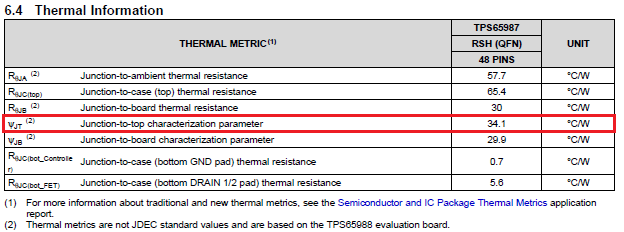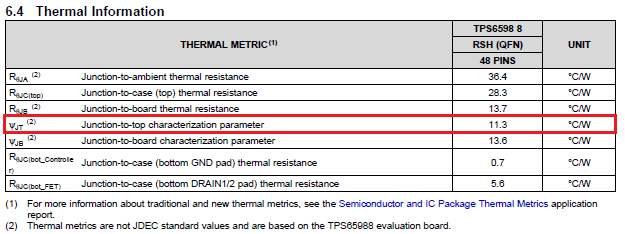Other Parts Discussed in Thread: TPS65987D
Hi Team,
There is large difference between thermal parameter of TPS65987D and TPS65988 as the following.
Is it true?
For example, ψjt of TPS65987D is 3 times larger than TPS65988.
I believe these devices are same package..
- TPS65987D
-TPS65988
Best Regards,
Yaita

